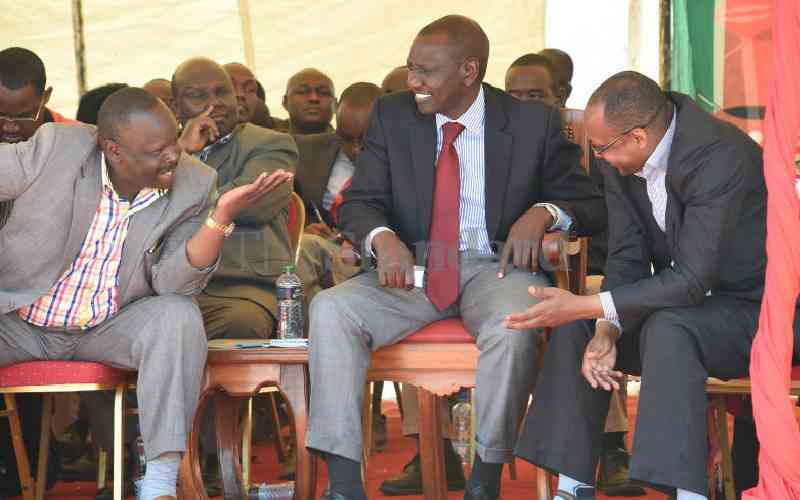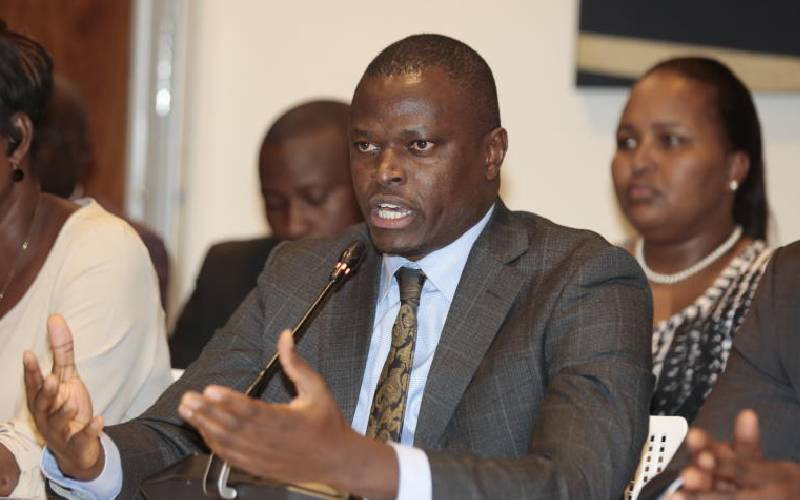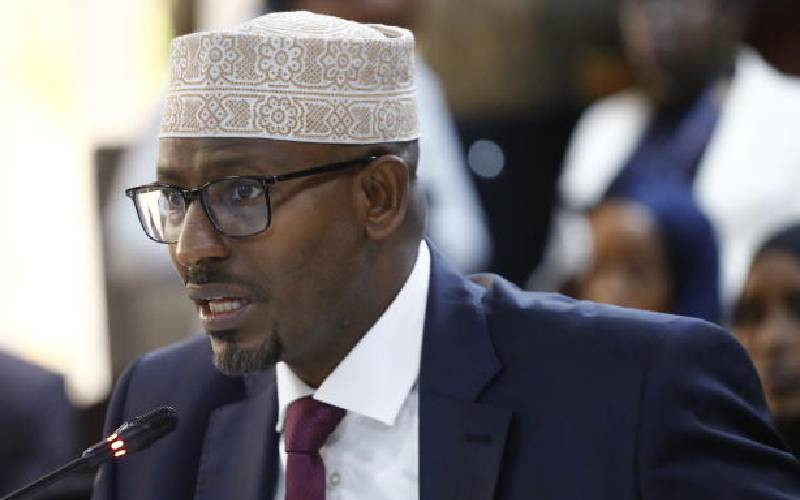Nairobi, Kenya: In fulfilment of Schedule IV of the Constitution, the 47 County Governments have over the last two years undertaken a phased but sustained strengthening of the six pillars (Leadership and Governance; Service Delivery; Human Resources for Health; Strategic Information; Commodity Security; and Financing) of the Health System to ensure improved access and utilization of quality health services by residents.
Service delivery in the health sector has improved tremendously due to more focused, need based investments and closer supervision by the County Governments. Indeed, the last two years has witnessed more investment in the health sector by the County Governments in real, annualized resource deployment than in the 50 years between Independence and Devolution.
Traditionally marginalized parts of Kenya have not only seen quality health services realized but made more accessible to the community in a more cost-effective manner thanks to the open, collaborative efforts by the two levels of Government . This consultative Framework has worked well in adherence to Article (6) of The Constitution.
Health services are both labour intensive and costly. Human resources, considering both headcount and skills, are a key input to the process. Health Infrastructure development is another key component in improving access to quality services. Under Schedule FOUR of The Constitution, the Counties are responsible for health services at the Community (Level - 1) Level, and from Level - 2 (Dispensary) to Level - 5 (County Referral Hospitals).
The Counties are investing heavily in this area by constructing and renovating health facilities and equipping them. Due to the high cost of Health equipment and the rapid changes in technology, many Governments and Private Health Providers the world over are considering financing mechanisms to develop the necessary capacity to deliver quality health services and reduce equipment obsolescence.
These include well-structured and implemented Public-Private Partnerships (PPPs). The Managed Equipment Services (MES) support to Counties by the National Government (MoH), and launched by H.E. the President, is a form of Public-Private Partnership (PPP).
A strong PPP allocates tasks, obligations, and risks among the public/state and private partners/ non-state actors in an optimal way. PPP is embraced only where the Public Sector Comparator proves that this service cannot be accessed through the normal Government Purchase system.
The Council of Governors understands and appreciates that the PPP arrangement can help strengthen the County Governments’ capacity to respond to the health needs of our citizens.
In principle, we are not opposed to the PPP arrangement. However, there are several concerns on which we hope to get a favourable clarification from the National Government and specifically, the Cabinet Secretary for Health.
1. From the various PPP options below, which Models was chosen for the project?
Resource Sharing ; Service Level Contracts; Regular Equipment Maintenance; Service delivery; Equipment Placement; Build, Operate and Transfer; Hire Purchase of Equipment/Infrastructure; Lease of Equipment/Infrastructure
2. Who has the residual ownership of the equipment after the contract period of seven years? Is the cost of Ksh.38 Billion inclusive of the residual value or will we have to pay a different sum to retain ownership?
3. Who provided The Transaction Advisory service for the project, since this is a requirement for all PPP arrangements? To whom do the Counties and the Leasing Companies go to for counsel and negotiation support if the Contractual obligations need to be varied?
4. International PPP Practice outlines five key phases of a potential PPP-Arrangement
• Phase 1: PPP Project Identification, Screening & Selection
Stay informed. Subscribe to our newsletter
• Phase 2: Completing the PPP Feasibility Analysis & Risk-Allocation Structure
• Phase 3: Conducting the PPP Tendering & Procurement
• Phase 4: Final PPP Contract Signing & Financial Closure
• Phase 5: Monitoring & Ensuring Post-Award PPP Performance
Whereas the National Government could have undertaken Phase 3&4 with little involvement of the Counties, the others require a lot of consultation and collaboration for effective implementation and outcomes. Identified County needs have to be the desired, realistic; and the solution selected the most impactful. Just to highlight why, see the attributes elaborated below that make up Phase 1&2:
5. Who is the Custodian of the material reports from Stages 1 & 2 that informed the choice of items in the list provided to the Counties as part of the draft MoU?
Where are the Actual PPP Contracts Signed by National Ministry of Health with the FIVE Companies? Is there any intent/promise built into the Contracts to achieve appreciable Technology Transfer to an Emerging African Economy?
Who has the real responsibility for Base Payment for leased equipment or the National Treasury will deduct money from the County Allocations and pay this sovereign debt of Ksh. 38 Billion over seven years?
The resource commitment to realize this MES initiative is staggering at Ksh. 38 Billion over seven years and clearly this is not a County, but National/Sovereign debt payable by ALL Kenyans.
6. To what level has the National Assembly and the Treasury engaged the Public Sector Comparator to get a feel of the Value for Money justification and direction?
It is not clear to the Counties if the equipment made available under this arrangement and stated in the list annexed to the MoU is all that is expected from the Ksh. 38 Billion. Further, it is not clear if the allocation will be equal in value, equitable or according to need. This is important information for the Counties because we have to, as appropriate, manage the perception and expectations of our own residents.
An Equal Share Approach would, from a rough calculation, put at each County’s disposal for procurement of equipment (if converted into a conditional grant) a staggering Ksh.808 Million over the envisioned 7-year life of the MES arrangement. This works out to about Ksh. 115 Million annually.
That level of investment in direct equipment procurement and upgrade would transform some of the Counties into Singapore or Taiwan in terms of health services, especially if the revenue generated through cost-sharing at Level - 4 and - 5 is re-invested to build on that foundation.
It is also not clear to us too, and we seek clarification from the National Government, if the location of the tagged equipment for the named two specific health facilities per County is immutable. That is, if there can be a shift based on the current reality (poor fit as a consequence of undertaking Stages 3 & 4 of the PPP Guidelines first… and parts of Stage 1 &2 are currently underway). Some of the listed equipment already exists and in service in these facilities, and no one expects us to pull out of service What We Own to take in leased replacements that will transfer back to the Leasing Agent in seven years.
7. What prior infrastructural investment is required? Are these suppliers the ones to also put in place the infrastructure, such as the rooms and other requirements? Does the infrastructure require special architectural details? How much will it cost? Have the infrastructural costs been provided for? Is it part of the contracts that have been signed by the National Government and the foreign suppliers?
8. Health being a devolved function, there is need for an intergovernmental agreement between the National Government and Devolved Government, to allow the National Government to do what it has done. Such an agreement is provided for in the Constitution at Article 187. So far, there has been no dialogue between the two levels of Government about this “transfer of function.”
The MoU circulated to the Counties for signing is too simplistic and unclear, and needs some sober and objective discussion; and especially on the many stated Obligations of the Counties and very few for the National MoH in this proposed arrangement.
We are NOT saying NO to support…and any is welcome… We are only being prudent to ensure any agreements entered into protect the wealth and rights of the people of Kenya who voted for the new Constitution and who elected ALL of us into office.
 The Standard Group Plc is a
multi-media organization with investments in media platforms spanning newspaper
print operations, television, radio broadcasting, digital and online services. The
Standard Group is recognized as a leading multi-media house in Kenya with a key
influence in matters of national and international interest.
The Standard Group Plc is a
multi-media organization with investments in media platforms spanning newspaper
print operations, television, radio broadcasting, digital and online services. The
Standard Group is recognized as a leading multi-media house in Kenya with a key
influence in matters of national and international interest.
 The Standard Group Plc is a
multi-media organization with investments in media platforms spanning newspaper
print operations, television, radio broadcasting, digital and online services. The
Standard Group is recognized as a leading multi-media house in Kenya with a key
influence in matters of national and international interest.
The Standard Group Plc is a
multi-media organization with investments in media platforms spanning newspaper
print operations, television, radio broadcasting, digital and online services. The
Standard Group is recognized as a leading multi-media house in Kenya with a key
influence in matters of national and international interest.








